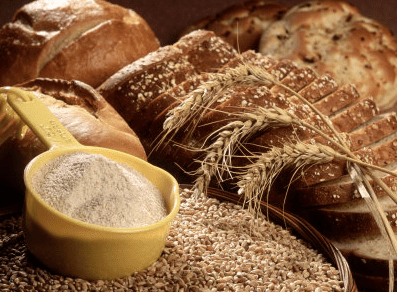Those with celiac disease or a gluten sensitivity have difficulty digesting the gluten contained in grains such as wheat, barley and rye. According to the University of Chicago Celiac Disease Center, over 3 million Americans suffer from celiac disease, which is a lifelong autoimmune disorder that can have debilitating symptoms for both children and adults. For those diagnosed with celiac or a gluten sensitivity, switching to the gluten-free diet is worth the challenge. It can make the sufferer feel notably better, sometimes in as little as two weeks.
Step 1
Avoid all wheat, rye, barley and triticale products. Wheat products also include spelt, durum, kamut, semolina and faro. Also avoid oats, unless the source certifies that the oats are free of cross-contamination.
Step 2
When eating food you did not cook yourself, always check the ingredients label or ask the cook or restaurant server if gluten-containing ingredients are present. Since not everyone knows what gluten-free means, it behooves you to learn the common ingredients in the foods you eat, so you can ask specifically about them.
Step 3
Purify your kitchen. Gluten even in trace amounts can affect the sensitive, so remove traces of wheat and other gluten-containing flours from your countertops, drawers and shelves. Designate certain areas as gluten-free. Label all containers of gluten-free ingredients.
Step 4
Isolate gluten-containing grains while preparing food. When you cook food that contains gluten and gluten-free food at the same time, keep the two grains as far apart as possible to avoid accidental contamination. Avoid placing gluten-free and gluten-containing ingredients near each other. Avoid using the same utensils to handle both foods or the same cooking or baking container without washing it. Don’t dip into the gluten-free flour using the same measuring cup or spoon.
Step 5
Cook using gluten-free ingredients. Use gluten-free flour substitutes for wheat flour in recipes that normally would contain wheat, such as breads and gravy. Generally, you’ll use a formulated mix of different gluten-free flours, such as brown rice flour, white rice flour, potato flour, potato starch, tapioca flour, corn flour, bean flour, coconut flour, chickpea flour, sorghum flour and other flours made from grains and legumes containing no gluten. Use pre-made flour mixes or mix up your own flour blends according to standard recipes. Use gluten-free flavorings, gluten-free baking powder and other ingredients that might otherwise contain gluten.
Step 6
Sample the many delicious gluten-free products and recipes for bread, cake, muffins, pie crust, pizza and other baked goods. Cook with rice noodles and brown rice. Try out gluten-free pastas. Although there are many blends, brown rice pasta is a great staple to have in your kitchen. The texture and taste of brown rice pasta are very like wheat pasta.
Step 7
When you shop, read all food labels. The Food Allergen Labeling and Consumer Protection Act of 2004 was designed to make sure that foods produced and packaged in the United States note on the package if the major allergens, including wheat, are present in the products. The law also describes the conditions under which the term “gluten-free” may be put on food labels. But don’t put too much stock in the food labels. Labels can be wrong and many other countries do not regulate their labeling similarly.
Step 8
Look for hidden sources of gluten in products you might not expect to contain wheat or barley. Wheat is sometimes used as a filler in certain products, like spices, or as a separator to keep candies and marshmallows from sticking to each other. Malt is a product of barley and used as a sweetener as well as in beer and other products. Ingredients such as those labeled simply “food starch” may be derived from wheat.
Step 9
Read up on gluten-free diets, as the complete list of foods to avoid, as well as permitted foods is extensive.
Warnings
- Always check with your doctor when you change your diet for health reasons.





